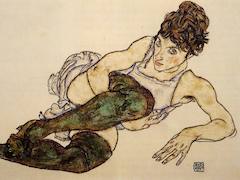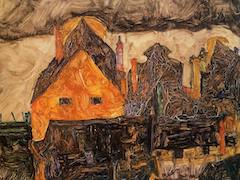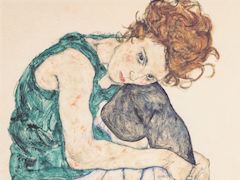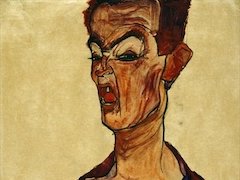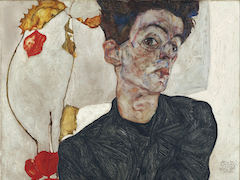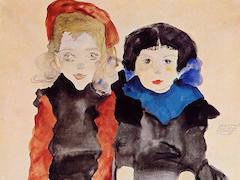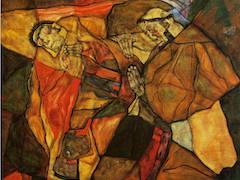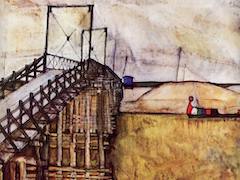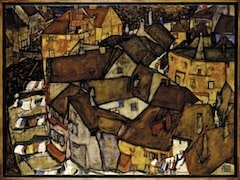Reclining Woman with Green Stockings, 1917 by Egon Schiele

From about 1914 on, Egon Schiele evolved a more representationally accurate style of rendering. In the process, his depictions of the female figure became more conventionally beautiful but lost something of their frenzied intensity. The artist's lines, formerly jagged and searching, became smooth and sure, capturing the curves of the body with unswerving accuracy. the complicated retracing, hatching, and scrolled embellishments seen in his earlier work were replaced by single, perfect strokes. Color always followed line. Schiele habitually began with a base glaze of ocher or brown, which defined the principal volumes. Over this he superimposed brief dabs of brighter gouache, mapping out salient bulges and concavities and describing key protuberances such as knuckles or cheekbones. The relatively three-dimensional approach which he used for flesh and drapery contrasted with the bolder stylization of hair and stockings. In the latter areas, the dense paint surface was essentially shaped by the flow of Schiele's brush.
Growing professional success in the last two years of his life enabled Schiele to emulate his mentor Klimt, by employing a virtual harem of paid models. Edith, the artist's wife, became increasingly reluctant to pose, the it is said that (especially in 1918, when she was pregnant) Schiele found her figure to heavy for his tastes. Edith's sister, Adele, to the contrary, seems to have been a willing and desired model, and she may well have posed for Reclining Woman with Green Stockings. Like Klimt, Schiele saw the female figure as a raw material necessary to the construction of his allegories. And like Klimt, he executed sheets and sheets of studies in order to generate pictorial ideas and compositions. The result, as well as Schiele's overriding goals, are visible in his later allegorical canvases, virtually all of which include female nudes.

